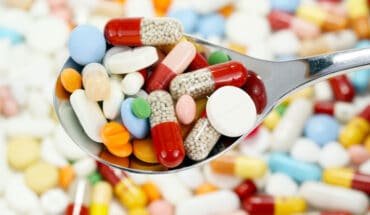Glucosamine is a popular supplement taken by many people to ease the pain of joint complaints including arthritis. However, the evidence that it actually works has always been a little flimsy, although a study published in the New England Journal of Medicine did suggest that 80 per cent of osteoarthritis sufferers with moderate or worse knee pain, showed big improvements after taking glucosamine with another supplement called chondroitin sulphate. Nearly 1600 people in the US took the supplement, or a placebo, for 24 weeks. Their pain scores were measured before the trial, and afterwards.
So what is glucosamine and how does it ease stiff joints? Basically, it is an amino acid that is produced naturally in the body. Glucosamine repairs, maintains and regenerates healthy cartilage and provides relieve from joint stiffness, joint pain and reduced mobility. Part of its important function is to enhance the synovial fluid, which acts a lubricant between the joints. It also helps to form the glue which holds cartilage tissue together.
As people get older, we lose some of our natural glucosamine and other substances, which can result in osteoarthritis. This is when cartilage wears down making joints stiff, painful and creaky. The weight-bearing joints such as the knees, hips and spine are mostly affected. There may come a point where two bones actually rub together, causing severe pain and reduced joint mobility. Factors that may contribute to the development of OA include: obesity (puts added strain on joints), jobs that involve repetitive movements of a particular joint and previous damage to joint, such as from a sports injury.
There are no readily available foods that contain glucosamine, unless you count the shells of crabs, shrimps and oysters, but you probably would not choose to crunch your way through those. The good news is that you can supplement your diet with glucosamine capsules, containing extract from the shells. A vegetarian version is also available which is extracted from a specially-cultured bacteria.
There are several forms of glucosamine available but research shows that glucosamine sulphate is the form best absorbed by the body. You can buy glucosamine alone or combined with chondroitin or fish oils in capsule form. There is also a liquid form which you drink, or a gel or cream you apply directly to the painful joint.
1500mg per day is the optimal dose. In a study of 178 people with OA, those randomized to receive Glucosamine at 1500mg/day for 4 weeks showed similar improvements to those seen with Ibuprofen at 1200mg daily. People with moderate to severe knee pain seem to gain the greatest benefit. Glucosamine may be equally effective as non-steroidal anti-inflammatory drugs (NSAID) for example, ibuprofen. However, there are much fewer reported side effects when taking glucosamine which makes it an attractive alternative for many sufferers. Glucosamine may also help repair injuries such as torn cartilage, sprained ligaments, tendons and prolapsed vertebral discs and so may help prevent more chronic conditions like OA.
The World Health Organisation has accepted that glucosamine is a slow acting drug, which can help in the treatment of osteoarthritis. In all studies, there have been no detrimental effects of the use of glucosamine reported, however the effects of glucosamine during pregnancy have not been investigated so it should be avoided at this time.
- A rough guide to health food supplements - 17th January 2017
- The Winter-warming Curry Diet - 22nd October 2016
- Salt sinners - 18th October 2016






